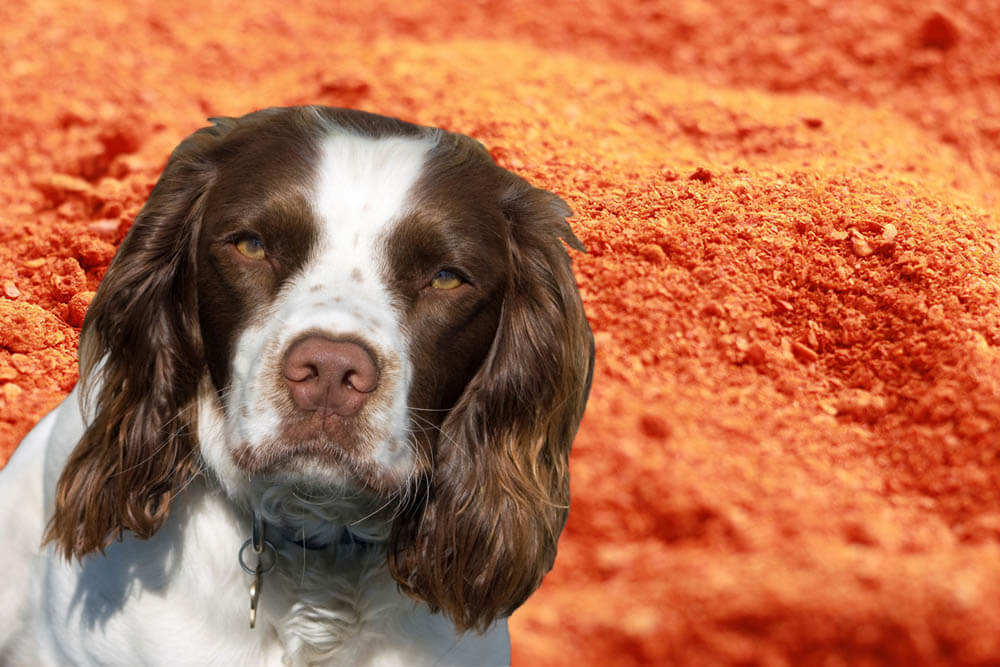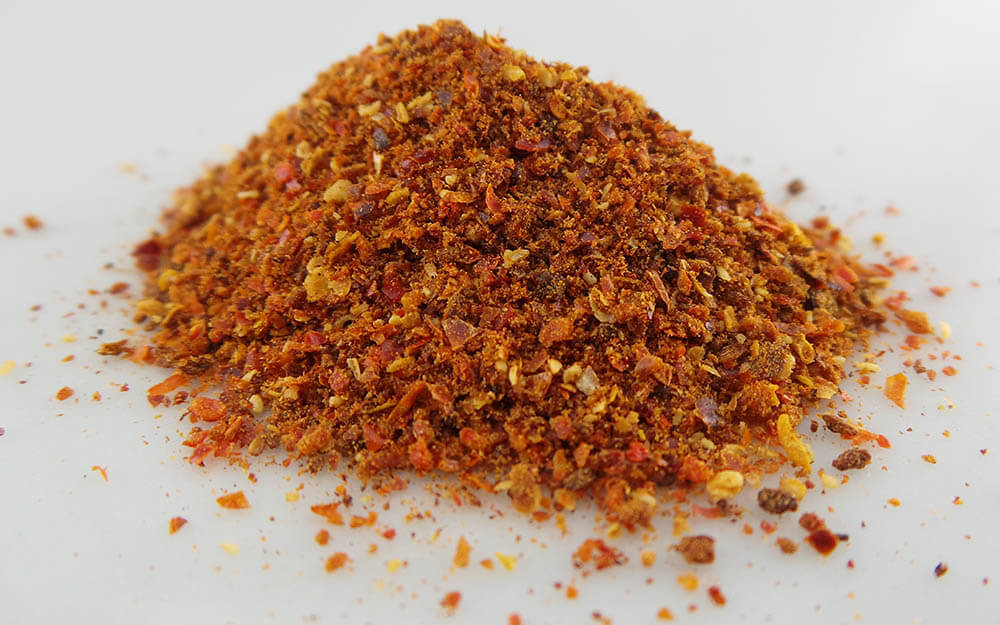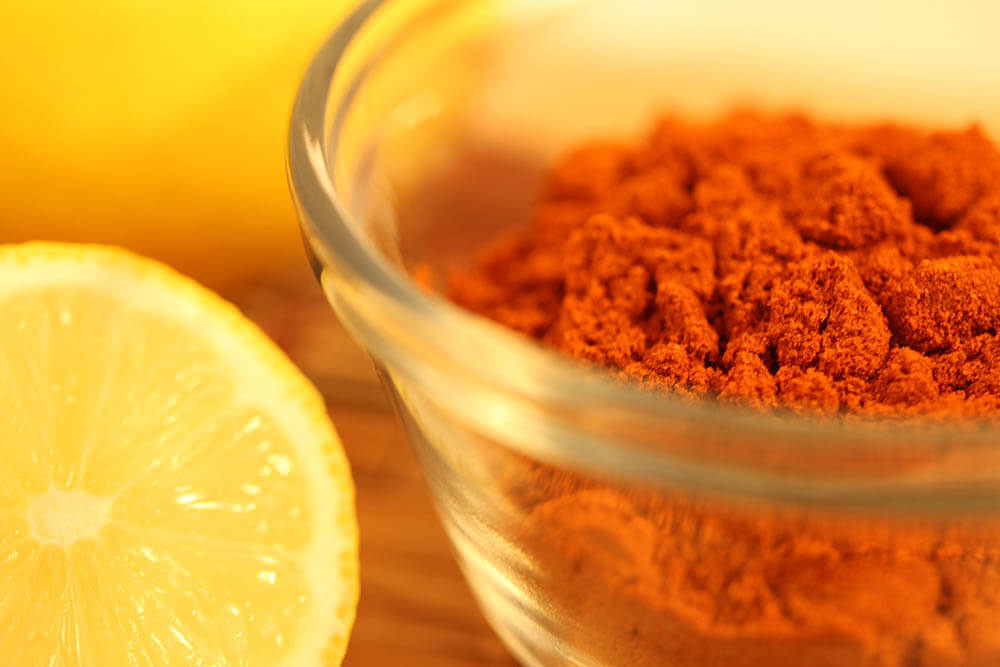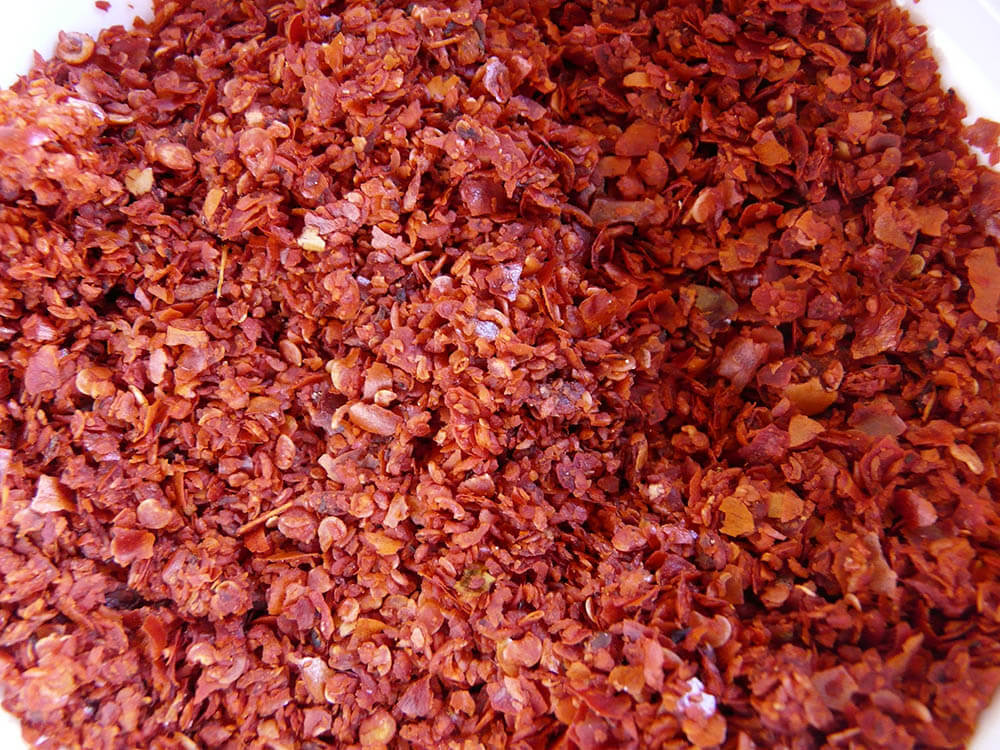Chili powder’s fiery kick adds zest to even the blandest meals, which explains why it’s used in various cuisines all over the world.
Dog food seems like the most boring of foods. So why not spice up your pet’s next meal by sprinkling some chili powder onto it?
Unfortunately, that’s a terrible idea. Dogs don’t like the scent of chili powder, and they sure as heck can’t stand the burning sensation it causes.
But the real reason dogs can’t eat chili powder is the fact that this spice can harm them in a variety of ways, which we’ll be discussing in this article. So read on for more information on why chili powder is bad for dogs!

Is Chili Powder Bad for Dogs?
Yes, chili powder is bad for dogs.
Chili powder is a kind of spice blend composed of ground dried chili peppers and other spices. These ingredients can cause your dog a lot of suffering when eaten.
Typically, these ingredients include:
Chili peppers
Crushed, dried chili peppers are the main components of chili powder. They’re what give this spice blend its signature fiery flavor.
The burning sensation chili peppers cause is due to a compound known as capsaicin. Capsaicin is an irritant to canines, which is why its consumption will burn your dog’s mouth, throat, and stomach. On the way out, it’ll even burn their rectum and anus. Humans may find this burning enjoyable, but dogs absolutely despise it.
Worse, capsaicin can cause digestive issues, such as:
- Vomiting
- Diarrhea
- Gas
- Indigestion
- Extreme thirst
- Dehydration
A dog may also experience the following problems:
- Panting
- Excessive drooling
- Runny nose
- Puffy, runny eyes
- Skin lesions
- Skin rashes
- Hypertension
- Gastrointestinal ulceration
The more chili powder your dog consumes, the more intense these symptoms can get. In the case of severe symptoms, you should rush your dog to the vet for treatment, especially because the dehydration caused by water loss can be deadly if allowed to go untreated.
Remember: dogs are more sensitive to capsaicin than humans. If you’re one of many people who suffer from digestive issues after consuming something spicy, just imagine how much worse things can get for a dog who eats chili powder.
Cumin
One of the spices chili powder sometimes contains is cumin.
Dogs can have cumin in small amounts. In larger amounts, however, it can cause digestive issues such as gas. It’s generally not a good idea to feed dogs cumin without asking a vet first about how much they can eat safely.
Cumin is particularly bad for dogs who have thin blood, had thin blood in the past, or are taking blood thinners.

Garlic
Some chili powder varieties contain garlic. Unfortunately, garlic is toxic to dogs because it contains a compound called thiosulfate.
Consuming large amounts of thiosulfate damages a dog’s red blood cells to cause anemia, whose symptoms include:
- Weakness
- Lethargy
- Pale gums
- Rapid breathing
- Jaundice
- Dark urine
- Disorientation
- Dizziness
- Fainting
- Exercise avoidance
Garlic toxicity also produces the following symptoms:
- Vomiting
- Diarrhea
- Loss of appetite
- Abdominal pain
- Depression
- Dehydration
Thankfully, it’s rare for canines to die from garlic toxicity. On average, a dog has to eat between 15 and 30 grams of garlic for every kilogram of their body weight to experience significant harm.
However, keep in mind that if your four-legged companion has a low tolerance for garlic, the chances are high that they’ll suffer from garlic toxicity even after swallowing only a small amount of chili powder. Regularly feeding a dog any garlic-containing food can also lead to a buildup of thiosulfate in their system until there’s enough of the substance to poison them.
Contact a vet immediately if your pooch displays the above symptoms after ingesting chili powder containing garlic.
Onions
If your chili powder contains onions, it can harm your furry friend, as onions are toxic to canines.
Like garlic, onion breaks down red blood cells to make a dog anemic. Onions are generally more dangerous than garlic, however, especially if your pooch is extremely sensitive to them.
Onion toxicity symptoms include:
- Vomiting
- Panting
- Poor appetite
- Weakness
- Lethargy
- Reddish urine
- Pale gums
- Rapid heart rate
- Fainting
If left untreated, onion toxicity can even kill a dog. It’s best to rush your pet to the vet if they experience the above symptoms after eating chili powder high in onions.
Salt
Chili powder sometimes contains salt, an excess of which is bad for dogs.
The canine body can only absorb a small amount of salt per day—about 100 mg of salt for a 33-pound dog. Any pooch that exceeds their required daily salt intake can suffer from severe dehydration, which impacts the muscles to cause involuntary muscle spasms. It can even destroy brain cells to cause confusion, seizures, and other difficulties.
The symptoms of salt poisoning include:
- Vomiting
- Diarrhea
- Weakness
- Reduced appetite
- Incoordination
- Extreme thirst, causing excessive drinking and urination
- Confusion
- Respiratory problems
- Rapid heartbeat
If your canine pal ingests significant amounts of salty chili powder, they may experience severe salt toxicity, whose symptoms also include:
- Muscle tremors
- Seizures
- Fainting
- Coma
If left untreated, salt toxicity can kill a dog. Contact a vet immediately if your dog displays any of the above symptoms after eating chili powder high in salt.

FAQs About Chili Powder for Dogs
Here, we answer more frequently asked questions about chili powder for dogs.
My dog ate chili powder. What should I do?
Start by not panicking. Then, figure out how much chili powder your dog ate and what ingredients it contains.
If your dog ate only a tiny amount of chili powder, they’ll likely be fine. However, it’s a good idea to monitor them for problems such as vomiting, diarrhea, lethargy, and excess panting. You should also give them water so they don’t get dehydrated. At any sign of trouble, contact a vet for advice on how to relieve their discomfort.
There’s a good chance your dog will experience more significant problems if they consumed a lot of chili powder, especially if it contains ingredients such as garlic, onions, cumin, and/or salt. Contact the vet immediately, explain what happened, describe any symptoms your pet is already experiencing, and follow your vet’s instructions closely. You may have to rush your pooch to the animal clinic or hospital for emergency treatment, especially if the symptoms are severe.
If you can’t reach a vet, those in North America can call the Pet Poison Helpline at (855) 764-7661 or Animal Poison Control at (888) 426-4435.
Do dogs like chili powder?
Dogs have an organ located in the palate area that allows them to use their powerful scent to “taste” food—and they don’t like the “taste” of spicy stuff like chili powder. This is why if you give a dog some chili powder, they’re more likely to reel backward in disgust than eat it.
Is spicy food bad for dogs?
Like humans, dogs can feel the burning sensation of spicy food in their mouth. Unlike humans, dogs don’t enjoy this sensation, which can lead to them pawing at their mouth and other behaviors indicative of discomfort.
Once the burning reaches the throat, a dog could end up gagging or dry heaving.
And when the spicy food enters the stomach, a dog could experience gastrointestinal distress.
So in short, yes, spicy food is bad for dogs. If your dog eats chili powder, hot pepper, or any other spicy food, contact a vet for advice on how to help them feel better.
What is chili powder composed of?
A type of spice blend, chili powder is typically made of pulverized dried chili peppers combined with other spices, such as garlic powder and cumin.
The chili pepper is the berry-fruit of a plant belonging to the genus Capsicum, which is part of the Solanaceae nightshade family.
What is the difference between chili powder and paprika?
Paprika is a type of chili powder made from grinding dried red peppers, which explains why it’s bright red.
As previously discussed, chili powder is typically made by combining crushed dried chili peppers with other spices. Paprika, however, usually consists of one or more types of ground dried chili peppers only.
Also, paprika is sweeter than your standard chili powder, while chili powder is hotter than paprika.
And in case you’re wondering, yes, paprika is also bad for dogs.
What is the difference between chili powder and cayenne powder?
Ground cayenne pepper, or simply cayenne powder, is a type of chili powder that’s composed of pulverized dried cayenne pepper and, in general, other types of chili.
Cayenne pepper is a chili pepper of moderate hotness.

Conclusion
It’s a bad idea to feed your dog chili powder. This spice blend is chock full of ingredients that can result in various issues, including but not limited to vomiting, diarrhea, lethargy, dehydration, respiratory problems, incoordination, and seizures. Besides, canines don’t even enjoy the burning sensation chili powder causes, so there’s no point in giving your dog any.
Keep your dog healthy and happy; don’t give them chili powder!
